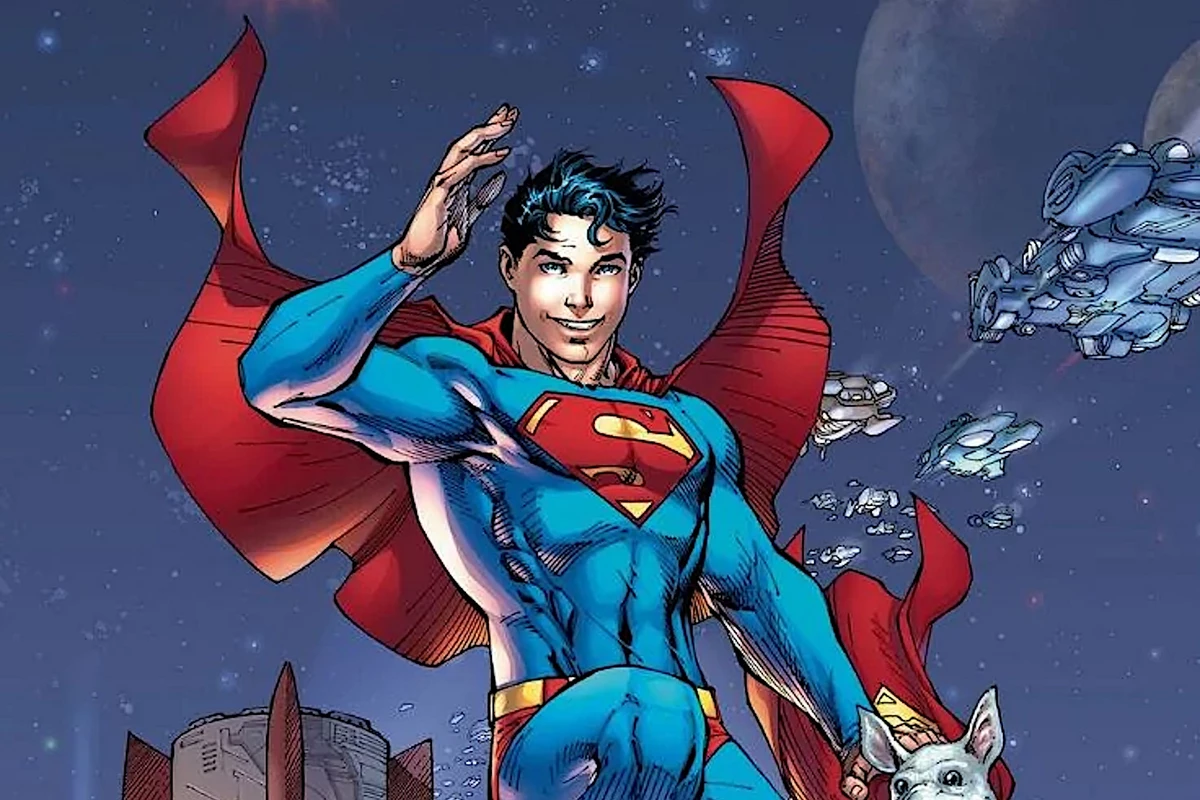John Jantsch (00:00): This episode of the Duct Tape Marketing Podcast is brought to you by Outbound Squad, formerly Blissful Prospecting, hosted by Jason Bay. It’s brought to you by the HubSpot Podcast Network, the audio destination for business professionals. Jason Bay is a leading sales expert and he talks with other leading sales experts to get you the information you need. I’ve recent episode, he talked about how much time you need to spend prospecting. Really, really eye-opening. Check it out. Uh, listen to the outbound squad, wherever you get your podcasts. Hello and welcome to another episode of the Duct Tape Marketing Podcast. This is John Chance. My guest today is Mindy Weinstein. She’s a leading expert in digital marketing and has been named as one of the top women in the industry globally. She’s the founder of the digital marketing firm Market Mindshift, and author of a book we’re gonna talk about today, the Power of Scarcity, leveraging Urgency and Demand to Influence Customer Decisions. So Mindy, welcome to the show.
Dr. Mindy Weinstein (01:09): Thank you so much for having me.
John Jantsch (01:11): So in, you know, probably the premiere book on this topic, I’m sure you’re familiar with Robert Shield, Dini’s Influence. Yes. You know, he certainly lists scarcity as one of the factors and you start with scarcity as an influence factor for chapter one. So you wanna unpack that?
Dr. Mindy Weinstein (01:28): Yeah, absolutely. And yeah, so Dr. Chaldini, I actually, he endorsed the book. So he is definitely someone that I have talked with often. But what happened is I was researching and working on my PhD cuz that’s really how this all came about, was I was looking at the influence factors and what motivates consumers. And I came across scarcity and as I dug more into research, I realized that of all the different factors that cause us to make decisions, scarcity appears to be the most powerful because it’s actually primal. It’s something that our ancestors even dealt with with scarcity. And still today it’s, we get the same type of emotions and reactions, even if it’s a product that’s scarce. I’m not talking about like survival and all of those things, but actually,
John Jantsch (02:14): But that’s, but you’re saying that’s where it started, right? To some degree. Right. I mean it’s like, are we gonna have enough food to eat? You know, is there gonna be water or where we go where we’re going? So that’s probably where it started, right?
Dr. Mindy Weinstein (02:23): Absolutely. Yeah. Absolutely. And so that’s a thing our ancestors, you know, they, in the early days of humankind, you know, they were trying to survive by looking for scarce resources, you know, shelter, water, food. And then when you look at even just the empires that are ruled over the years, you know, the ones that had controls usually because they had control of food and water. And so we are hardwired to respond to scarcity.
John Jantsch (02:52): So I don’t know if Robert told you this story. He was actually on my show years ago and he actually said he wrote the book cuz he was tired of seeing people be influenced. Mm-hmm
Dr. Mindy Weinstein (03:18): Yes. And that was actually something that I had on my mind, you know, as I was working on this book is because I also don’t want there to be fake scarcity, you know, as people realize like, oh this is really powerful so I’m just gonna make everything limited quantity and everything’s selling out fast. And so I really warn against that in the book because you think about today’s day and age, I mean we can look up companies easily if someone’s not happy, they’re gonna post on social, they’re gonna post on review sites. So really doing anything that’s false, you know, in terms of marketing saying that something’s running out, it’s not, it backfires and it’s one of those, it’s harder to improve your reputation. So for me, like one of the things I look at with this book is I go back and forth cuz all of us, we’re all consumers too.
(04:04): You know, even being in business we’re consumers too. So I wear both hats is that I really want to educate people on both sides. So there are times that scarcity, you know, they couldn’t be really beneficial, you know, informing customers that yes, you know, this event, there’s only so many seats left. That was someone I had interviewed and he talked about these great events that he does and he said, we’ve gotten to the point that our members want to hear from us. You know, they wanna know if they’re running out cause they don’t wanna miss their chance. And so there’s a lot of benefit too. But yeah, definitely needs to be above board and ethical.
John Jantsch (04:36): Well, yeah, I mean how many Black Friday emails are we still getting today on Monday? Right? Saying the Black Friday sale, only one more day left. It’s like, wait, this is like Monday. Yeah,
Dr. Mindy Weinstein (04:45): Today’s Monday
John Jantsch (04:46):
Dr. Mindy Weinstein (05:16): Yeah, so you know, fomo, like you said, we all know fomo, we’ve heard it, but it’s actually based on a deeper psychological theory known as loss aversion. Mm-hmm
John Jantsch (06:15): Well, and you hear a lot of marketers jokingly, half jokingly talk about the idea that, you know, you need to sell painkillers instead of vitamins, you know mm-hmm
Dr. Mindy Weinstein (06:41): Yes. And it’s actually even, it’s, so it is that fear of loss, but it is, like you said, it’s more of that okay, this is a quick fix, right? I’m gonna buy this, I’m gonna feel better. But there’s also something that it compliments everything we’re talking about and it’s our anticipated regret. So what happens sometimes if we’re faced with, you know, like you’re talking about the Black Friday, you get a Black Friday text message and you’re looking at something and it does kind of interest you. Now you go through a, well, if I don’t buy this right, am I gonna regret it? And you start to anticipate how you’re gonna feel. And so that anticipated regret and the fear of loss, it really does motivate us then to take that quick action. But what’s very interesting is what we’ve found through research is that regret or anticipated regret of not taking action is actually short-lived. So we might feel like, you know this, we’re really gonna regret this, but you’re probably not
John Jantsch (07:43): So. So what are some examples that, that you’ve seen? I guess we could go both good and bad mm-hmm.
Dr. Mindy Weinstein (08:12): Right? And so, you know, it’s important too to understand, I’m gonna give you examples, but there’s really four different types of scarcity. And that’s really important to understand as I’m going through the examples. So there’s time related scarcity. So that would be the countdown timer that you’re talking about. Right? Or the other thing though with time related are products that are only available a certain amount of time. Mm-hmm
(08:55): You know, I think of all these things, but that’s really time related. But then you have also supply related. And that is really where there is a limited quantity. And it could be because of a supply shortage or an intentional restriction, right? So that’s where things like drops come into play. You know, like Nike will have a drop that’s limited or that’s supply related. And what that does is that really speaks to people who wanna be different and unique, have some self-expression, they don’t want what everyone else has. And then on top of that there’s limited edition, which is part of supply related. And that’s, I mean, I even went to the store and there was a limited edition Sprite for the holidays, like cranberry Sprite. So it’s any kind of twist but still elicits scarcity, all of these examples because it’s something that you can’t always get. And then finally there’s really demand related scarcity. And examples of those are anytime you have a wait list or you show something has been restocked mm-hmm.
John Jantsch (10:09): And really, as I listen to you describe those different ways. I mean a lot of them have intentionality too, them mm-hmm.
Dr. Mindy Weinstein (10:50): So it, you know, that’s where it’s, you gotta be careful. So I mean, yes, it is something that you are creating, but it could be truly, I know some companies, if it’s a product especially that you’re gonna have a wait list. I think about the Ford Bronco. Mm-hmm.
John Jantsch (11:07): Issues, electric trucks, yeah.
Dr. Mindy Weinstein (11:08): Right. So with some of those, yeah, I mean it is gonna be manufactured scarcity. And I think consumers do know that in certain situations, but then it becomes more of like they’re now on the wait list. Or if it’s something where they can get an exclusive access or do you remember when Clubhouse came out? The app clubhouse? Mm-hmm.
John Jantsch (11:54): Let me ask you a few things. Do you feel like you know what differentiates your business from every other business out there? Can you confidently charge a premium for what you offer? Are you working from a plan, a marketing roadmap that allows you to know precisely what to do next? Look, don’t worry if you can’t answer yes to any or all of these questions, you’re not alone. See marketers today get so focused on the tactic of the week, staring them right in the face that they forget to look at the big picture. The overarching strategy needed to consistently grow their business. Over the years I’ve worked with thousands of businesses helping them do just that. Create the perfect marketing strategy and plan that gives total clarity about what to do next. Confidence to charge ahead and charge more and complete control of the marketing tactics they choose. I would love to help you and your team do the same. Look to find out if our strategy first program is right for you, visit dtm.world/grow and request a free consultation. That’s DTM world slash grow. So as a consumer, let’s kind of flip this around. I feel like we’ve been talking about marketers now as a consumer, you know, is there a way to, it’s like when you’re experiencing fomo, do this, you know, a way to kind of avoid making the impulses that often, you know, come from it.
Dr. Mindy Weinstein (13:19): Oh yes. And you know, one thing that I want to just admit right away is that, you know, I’m a researcher. I wrote, wrote this book, I’m a marketer, I’m all these things, but I’m a consumer and I still get caught up in it. So I’ll tell you some of the things that we know from research because scarcity’s that powerful. But what we know is that that again, that feeling that you’re gonna have the missing out, the first thing is recognizing that’s driving a decision. That’s the first, well that’s like all things recognize that you have a problem. No, recognize that there is some FOMO involved. And ask yourself, what is the motivation behind this purchase? Is it truly because I want it or is it because I’m fearful that I’ll miss out on something? That’s the first thing. And then the second thing, if it’s something that you can wait on, you know, wait 24 hours, that’s generally what I recommend.
(14:07): You know, don’t buy anything. Wait 24 hours the next day. If it’s truly still something you want, then that’s the time then to consider. Budget obviously comes into mind. But is this something worth buying? And then that other thing that I talked about, knowing that feeling is short-lived, that you’re not gonna continue to feel like you’re gonna miss out. Knowing that really equips you to make more like informed decisions. And actually, I think I said I had three, but I have a fourth one to throw in there. And this is just being an informed consumer. You know, there’s so much we know, there’s so much research and so much information you could find online. If you feel like, okay, this seems like a really good deal, don’t hit, hit the buy button right away. Look at what some of the prices have been previously for that product. Have there been been similar sales? Are there different places you can buy it? And that just helps equip you when you’re making those decisions.
John Jantsch (14:58): You know, flipping back to marketers, I mean, is there a point at which people start seeing the countdown clock and go, that’s bs. You know, that actually makes me not really a fan of your brand. I mean, even if maybe it’s, well let’s just assume it’s real, that there really is a countdown clock that you really are gonna stick to what you said. Still using those tactics. Uh, is there a risk of people who are just so sick of them now that it kind of tarnishes the brand even if it’s valid?
Dr. Mindy Weinstein (15:24): Yeah, so, and that’s a great question. You know, using is the same tactic too much. Yes it can backfire because people fatigue with that. And even, you know, companies that continue to offer the same coupons and same promotions, you start to value that product or service based on that discount versus what you would normally charge. And so your customers aren’t going to think of it as valuable. But when you use them periodically, they do help. Like I know one company, they are an e-bike company, so they sell mainly online and they do countdown timers just to show when the sale ends. So they’re already doing the sale. They just added that additional item on there. And talking to the ceo, he said, it’s amazing when we do that. He goes, sales increased by 40%. So it’s like people do know that and we all have a love-hate relationship with them.
(16:11): I know as customers, like we hate them, but then we’re still gonna buy during that time period too because we’re now competing with the clock. But it’s just a matter of not using the same, you know, app approach and tactic over and over again. And also knowing your audience because mm-hmm.
John Jantsch (16:52): So, so let’s flip this around a little bit, and I think you’ve alluded to it some, but you know, for some people when everybody is having fomo mm-hmm. That’s when they want to like bail, right? So it’s like, what’s the punchline? The joke like this place is dead, everybody goes there now. And so, you know, how do you in some ways use scarcity as a like, you know, differentiator mm-hmm
Dr. Mindy Weinstein (17:21): Right. Right. And that’s, I mean that’s a huge thing that luxury brands have had to deal with. You know, there was a case a while ago about Christian Dior and seeing that their colognes and perfumes were in grocery stores, you know, and that was a problem. And so it’s distribution is distribution issue. And so for brands, just going back, like to kind of just clarify a little bit more of what I found from research, you know, if you have a product or a, or really it’s a product, you know, that’s more conspicuous consumption. So something someone’s gonna wear and show off or carry around or you know, things, electronics usually fall into that. Well that is very much going to speak to those people who don’t wanna be like everyone else. And so you do have to keep that in mind. And it’s that balance between do restrict, you know, they restrict supplies, that’s why they do drops and things like that.
(18:12): But just knowing that’s who you’re going to be speaking to, you’re not gonna turn those people off by doing that cuz you’re actually gonna continue to draw them in because of that. But then going to like what you’re talking about, well if something becomes really popular and people wanna be different, well it depends what it is. Like there’s actually a jewelry company that I talked with the CEO O and that is still conspicuous consumption, but at the same time, this particular brand, very popular with celebrities. So then you have the whole consumer base who wanna be like this, you know these different people, right? And so they found that actually one of their biggest assets as a company was they were having a hard time staying in stock and so they were constantly restocking. Sure. And they were letting customers know. And when I talked to the founder of that company, she said that it was when we sent out an email and it just said restocked, you know, in the subject line and just sales, they already like sold out again
John Jantsch (19:15): It’s interesting you mentioned the distribution element Dior, you know, one example that comes to mind and for me was Crispy Green Donuts. I don’t know you that Yes. Oh yes. You know, they were, they had like a cult following, I mean that people would go to the stores cuz the only place you could get ’em is stores. You’d watch him by the millions being made. Right. You know, and it was almost a partly experience and all of a sudden they were like, let’s sell ’em in gas stations and it kind of killed the brand, you know, frankly, I mean I probably still sell billions, you know that way. Six at a time. But you know, it killed the appeal of the brand so to speak.
Dr. Mindy Weinstein (19:48): And it was the experience too. I mean I remember going and if you’d wait in line, you could watch ’em go through the conveyor belt, right? It would give you your hot donut as you were there. And so yeah, lost a little bit of that, that Lester I guess you could say. Yeah.
John Jantsch (20:03): So Mindy, I appreciate stopping by the Duct Tape Marketing podcast. You want to tell people where they can find the power of scarcity and maybe connect with you in some other ways?
Dr. Mindy Weinstein (20:11): Yes. So I make it really easy. Just go to power of scarcity.com. That will take you to a page where it has my book. You could order it, but also has all my contact information there too. But that’s the best place. So power of scarcity.com.
John Jantsch (20:25): Awesome. Well again, I appreciate you taking a few moments to stop by the podcast and uh, hopefully we’ll run into you in real life, one of these days out there on the road.
Dr. Mindy Weinstein (20:32): I would love that.
John Jantsch (20:33): Hey, and one final thing before you go. You know how I talk about marketing strategy, strategy before tactics? Well, sometimes it can be hard to understand where you stand in that, what needs to be done with regard to creating a marketing strategy. So we created a free tool for you. It’s called the Marketing Strategy Assessment. You can find [email protected] marketingassessment.co. Check out our free marketing assessment and learn where you are with your strategy today. That’s just marketingassessment.co. I’d love to chat with you about the results that you get.
























































![Key Metrics for Social Media Marketing [Infographic] Key Metrics for Social Media Marketing [Infographic]](https://www.socialmediatoday.com/imgproxy/nP1lliSbrTbUmhFV6RdAz9qJZFvsstq3IG6orLUMMls/g:ce/rs:fit:770:435/bG9jYWw6Ly8vZGl2ZWltYWdlL3NvY2lhbF9tZWRpYV9yb2lfaW5vZ3JhcGhpYzIucG5n.webp)


















